We exchanged sideways glances. It was a dubious claim, and the old judge we were talking to followed it with a glaring non sequitur.
“I think he killed himself,” insisted 76-year-old former judge Alexander Nemer. “I mean, look at the photos. Part of the man’s head is missing. Something blew it off. There’s a picture of a cat licking the inside of his skull when he’s there on the garage floor. I would generally say something took the top of his head off.”
Ignoring the disturbing image this statement conjured, Texas Public Radio reporter David Martin Davies and I pointed out that that was why we were there. The crime scene photos, autopsy files, police records, and the actual inquest documents were all gone, vanished, and no one — including myself and Davies — could find them.
Nemer simply informed us that he gave the inquest files to the court clerk when the hearing was concluded.
Davies pressed on, asking Nemer if the photo in question actually proved that the victim shot himself or that he was shot, possibly by someone else. I reminded Nemer that Texas Ranger Bob Prince had testified at the inquest and said there was no gunpowder residue found on the victim’s body. We asked Nemer how that was possible.
“I’m not here to speculate,” Nemer said. “I’m only here to tell you what happened.”
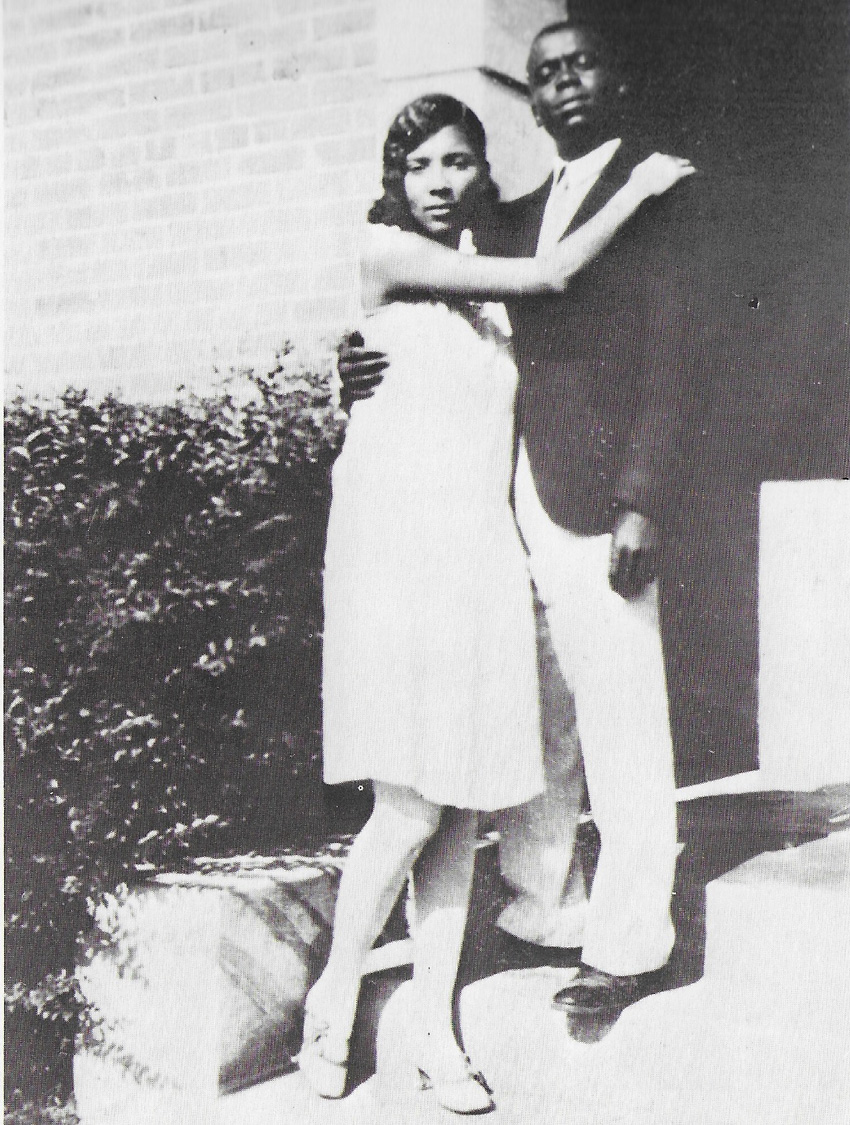
The official details of the crime, so far as they exist, are limited to a report issued by the Texas Department of Public Safety (DPS), dated Oct. 15, 1976: County, Anderson; Place of Occurrence, Palestine; Victim, Frank J. Robinson; Offense, Questionable Death.
Outside of the contemporary newspaper coverage, the DPS report on this 74-year-old Black man’s death is all that’s left. Everything else is missing.
The initial DPS findings, filed by Prince, an officer of Company F of the Texas Rangers, is 12 pages long and communicates that agency’s discovery in some detail. On Wed., Oct. 13, 1976, Robinson — a retired school superintendent and prominent Palestine civil rights leader — was killed by a single 12-gauge shotgun blast to his forehead, the barrel of which had been pressed directly against the flesh covering the bridge of his nose between his eyeballs. The top and right sides of his head were blown away. The physical evidence, mostly confined to the front half of the left bay of the two-car garage adjacent to and behind the Robinson residence, was described as follows:
Body was laying on its back in a sprawled position, feet slightly spread, left hand laying on the left side of chest, and right arm laying back, pointed upward. Victim was fully clothed, top part of head blown away from obvious shotgun wound. Brain matter and blood were on the walls surrounding the body, and on the floor surrounding same. Head was resting against closed screen door [approximately halfway down the left wall of the garage bay] which entered into the house from garage.
A 12 gauge, double barrel, sawed off shotgun, SN X4313, Ranger brand, was found with stock resting on victim’s legs, and barrel laying onto the concrete floor. In the chamber of the shotgun was found one spent round and one live round, both of #8 shot, Remington Peters ammunition, with spent round being in left barrel.
There were two spent shells found on the ground, both of the same caliber and brand and shot number as was found in the weapon. One was found beside the right arm of the victim and the other one was found approximately three feet from the victim.
Frank’s wife Dorothy’s new, red 1976 Oldsmobile was parked in the right bay of the garage and, in front of it, sat a gasoline rototiller and a lawn vacuum sweeper. The bag for the sweeper was draped over the handle of the rototiller. Ranger Prince’s report indicated that the rototiller, the lawn vacuum sweeper bag, and the front fender of Dorothy’s car all had shot damage and that some of the shot struck the catalytic converter and muffler under the vehicle and some ricocheted off the front bumper and lodged in the back wall of the garage.
Frank and Dorothy Robinson’s residence sat on a hill just west of the A.M. Story Middle School (formerly the A.M. Story High School) and north of most of the rest of the neighborhood, which was called Haven Acres. Robinson dabbled in real estate and had developed Haven Acres himself. One of the streets into the neighborhood was named Robinson, and another bore Dorothy’s maiden name, Redus. The playground for the A.M. Story Middle School sat below the front of the Robinson residence, between the school itself and Variah (“Vibrant Life”), the street the Robinsons lived on the end of. And on the day Frank Robinson was killed, six boys were playing football on that playground and actually heard or saw something relevant to the man’s death.
The six boys who provided details are James David Allen, 11, white; David Warden Brown, 12, white; Charles Hardy Gregory, III, 11, white; Jeffrey Todd Kale, 11, white; Carlos Aaron Sepulveda, 12, Hispanic; and Donald Eugene Watkins, 13, white. All six heard four shots, and Hawkins said he saw a white man standing behind Robinson’s fence when the last couple of shots were fired. Earlier that morning, Story student Michael Kevin Peterson, 11, white, said he saw a white man in a white van leaving the Robinson residence.
After local law enforcement officers completed their crime scene analysis, Palestine Police Chief Kenneth Berry — who had been on the job only 18 months after 17 years with the Waco Police Department — announced that the official autopsy revealed no traces of gunpowder residue on Robinson’s body and termed his death a homicide. By Friday, Oct. 15, the police issued a public plea for help in the investigation of the “shotgun slaying.” Chief Berry said, “We have no suspects, but we do have leads we are working on.”
By that following Monday (Oct. 18), Chief Berry’s mind had changed. Within a week of Robinson’s death, Berry was claiming an absence of nitrate or gunpowder residue on a person who fired a shotgun was not uncommon. And in a matter of days, many whites in the community already accepted the narrative that Robinson’s wounds were self-inflicted, while most Blacks contended it was an assassination. Dr. John Warfield, a University of Texas professor and the national secretary of the Black Political Assembly, told the Austin American-Statesman at the time, “Black people there have little faith in the police department. … [The Palestine police] are not prone to provide justice for Black people.”
State Rep. Paul Ragsdale (D-Dallas) also spoke with the Statesman, and his sentiments echoed Warfield’s. “The people there are very much concerned that it is a possible political assassination.”
Warfield, after whom the John L. Warfield Center for African and African-American Studies at UT-Austin is now named, expounded on his remarks to the Statesman. “It is clear that this Ku Klux Klan-style murder and terror is as real on the 200th birthday of this immature nation as it was in the 19th century. There is a conspiracy in this state to obstruct the political rights and the political awakening of Black and brown people and the powerful potential constituency they represent.”
And Warfield’s political conspiracy reference was directly aimed at sitting Texas Gov. Dolph Briscoe, who had vocally opposed President Lyndon Baines Johnson’s 1965 Voting Rights Act and referred to South Texas as a “little Cuba” just a month earlier.
Warfield also told the Statesman that he thought the assassin waited for Robinson in the office connecting the house with the garage and observed that “these are the kinds of things that create a climate that legitimizes the thing that happened to Frank.”
Ragsdale noted that many locals believed Robinson’s death was the result of a sanctioned hit executed by a hired killer from somewhere else.
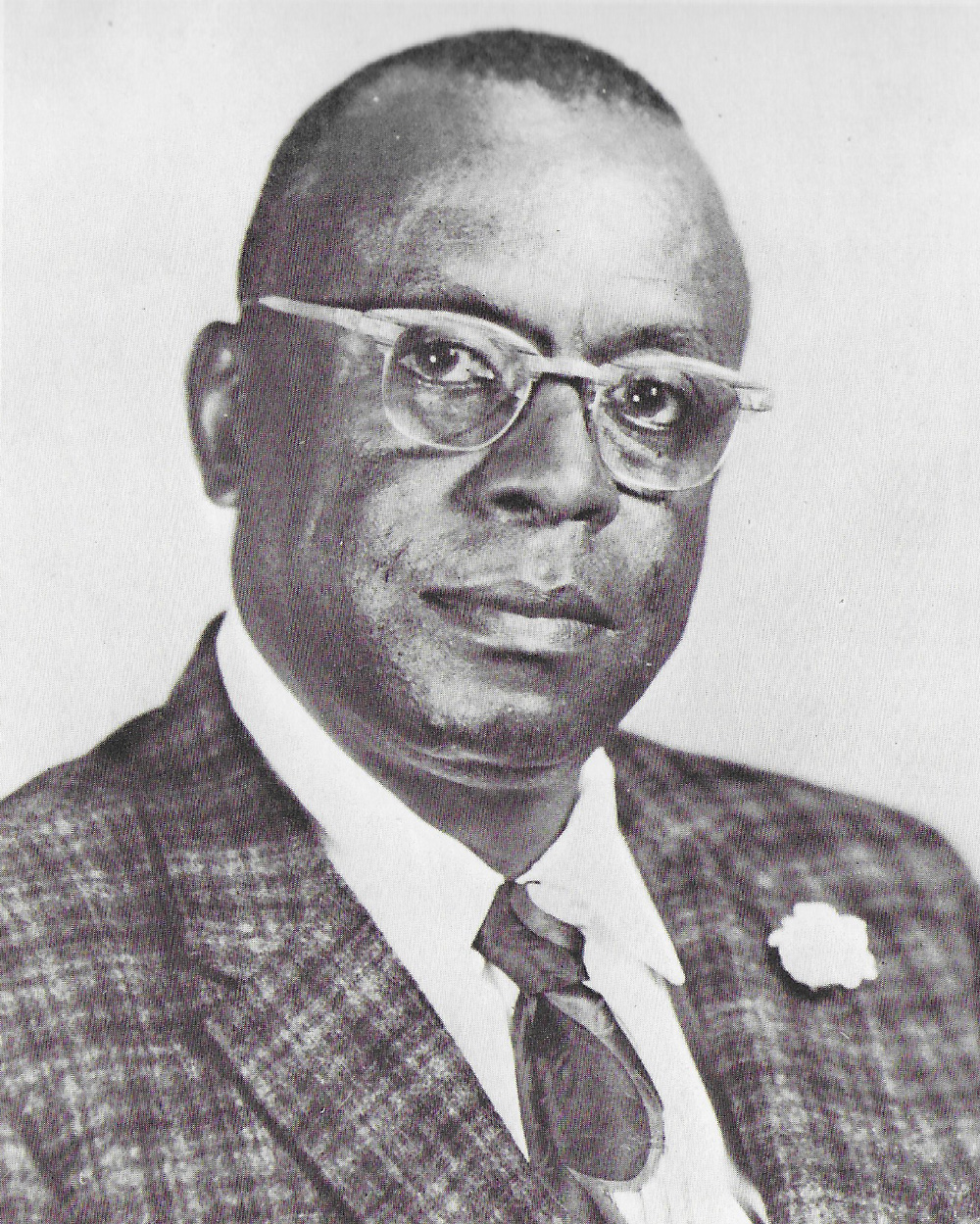
It was mid-July 2022 when I got a phone call from Davies, an award-winning San Antonio journalist. Since 1999, he had been the host and producer of Texas Matters, a weekly radio news magazine and podcast in which he examines the questions and issues facing the Lone Star State. Davies had done pieces on the Slocum Massacre after my book on the subject came out in 2014 and while I was working with the descendants of that pogrom for a historical marker. The marker effort was a grueling and uphill but eventually successful slog, thanks in no small part to journalists like Davies, who covered it for NPR. I think we both knew then that there was still work to be done.
I pushed on along with the chief spokesperson behind the efforts to erect a Slocum Massacre historical marker. Descendant Constance Hollie-Jawaid and I co-wrote a screenplay on the subject while continuing to try to raise awareness about the atrocity and remind people that the victims of the carnage are still buried in unmarked mass graves. And something that was said when we first met with Anderson County Historical Commission Chairman Jimmie Ray Odom about the approved marker stunned us.
Frank J. Robinson had known Abe Wilson, a Hollie-Jawaid forebear directly affected by the Slocum Massacre, and Robinson had gone on, again, to become a local civil rights champion. In fact, he and two other Black men from Palestine, Rodney A. Howard and Timothy Smith, had sued the Anderson County Commissioners Court over race-based gerrymandering and won their suit in a Smith County Federal Court in 1973 and prevailed again on Dec. 23, 1974, when Anderson County challenged the ruling in the Fifth Circuit Court of Appeals. Howard and Smith’s attorney had been the husband of former Texas Gov. Ann Richards, Dave Richards.
But Robinson, Smith, and Howard didn’t stop there. They immediately began working on a lawsuit to establish single-member districts so the local Black vote would also be protected in city council elections. Austin attorney Larry Daves worked with the trio on this suit, and, in late 1975, they achieved a consent decree that forced Palestine into redistricting. The trio’s efforts opened up Anderson County to Black political representation, a say in how the community was run and how the county was governed.
Then, in mid- to late-1976, Robinson began working on (among other things) a local scandal, specifically reports that Black citizens who lived north of him were being charged for city services that they didn’t receive. It became the next injustice that he turned his attention to. On Labor Day weekend of that year, he expressed as much to longtime friends Sidney Earl and Vita Childs Palmer, whom Robinson and Dorothy had known since their college days at Prairie View A&M University. The Palmers’ daughter, Eloyce Green, had grown up referring to the Robinsons as “Uncle Frank” and “Aunt Dorothy,” and she remembered Robinson discussing the scandal with her father at their home in Tyler during a Labor Day visit.
“I can still see my parents talking to Frank in the kitchen,” Green, 82, told me. “My dad told him, ‘If you don’t leave these white folks alone, they’re gonna kill you.’ ”
Frank’s response was simple and straightforward. “I’m not afraid ’cause they won’t be getting nothing but an old man.”
Davies and I had both been watching the current Texas legislature’s ongoing gerrymandering tactics across the state with various and, I’m sure, comparable levels of consternation and dismay. And we were both aware of Frank J. Robinson’s work and genuinely troubled by the ways in which the current Republican attempts to ensure white electoral primacy undermined everything Robinson had fought and probably died for. Robinson believed Blacks ought to have a say. Robinson believed Blacks should have a seat at the table. The most recent Republican-apportioned voting maps seemed flagrantly designed to limit the voices of persons of color in particular.
So, Davies called me in mid-July to discuss researching the suspicious circumstances surrounding Robinson’s death. He said he was working on an October piece for the Texas Observer and an NPR podcast examining the subject in more detail. And he noted that when he discussed the details of his story with the Observer, they suggested that he reach out to me.
Staff members at the Austin-based bimonthly were aware of my book The 1910 Slocum Massacre: An Act of Genocide in East Texas and my work with massacre descendants to get the historical marker. Former Observer staffer Michael Barajas had also written a powerful feature on the unmarked mass graves in the Slocum area, titled “Where the Bodies Are Buried,” in the July-August 2019 edition of the magazine. And three months later, I was mentioned in the October Texas Monthly cover story “The Battle to Rewrite Texas History” as part of a new generation of writers and scholars trying to set the record straight. Then, when American conservatives declared Critical Race Theory (CRT) Public Enemy No. 1, I wrote about meeting Anderson County Historical Chairman Odom with Slocum Massacre descendant Hollie-Jawaid in the July 7, 2021 edition of the Fort Worth Weekly:
In late December 2015, Constance Hollie-Jawaid and I were still working on the final plans for the dedication ceremony for a Texas state historical marker commemorating the Slocum Massacre. The fight to get the marker approved had been grueling, and, on that particular day, we had traveled to Palestine, Texas, to meet with the marker effort’s chief antagonist, Anderson County Historical Chairman Jimmy Ray Odom. Odom’s beliefs about the Slocum Massacre were almost completely contradictory to ours, but — in conversation, anyway — he was a straight shooter. Our historical and cultural disagreements notwithstanding, I respected him for that.
Jimmy had taken some heat in the press for his straight-shooting, and he was upset with me. And when we met that day in late December, he let me know this in no uncertain terms. At that point, however, the marker was secured. Constance — a descendant of victims of the atrocity — and I had won the argument, so we could be magnanimous. I let Jimmy air his grievances without response or complaint. …
After the discussion regarding the marker ceremony concluded and the air was a hair more convivial, I asked Jimmy why there was no historical marker for a Black activist named Frank J. Robinson — and his response was as straightforward as it was shocking.
“Oh, they killed him,” Jimmy said.
The statement was dumbfounding.
Odom and the Anderson County Historical Commission had so adamantly opposed our Slocum Massacre marker that we were forced to go around Anderson County and appeal directly to the Texas State Historical Commission. And because Odom and the local commission had engaged in so many ridiculous machinations and stall tactics, the state consented to our request. And here Odom was, unwilling to concede an atrocity committed 115 years earlier but flatly acknowledging an assassination just 40 years previous.
I had planned to do more research into Frank J. Robinson’s death at that time and maybe even write a book on the subject, but one project or another interfered or led me on to other stories.
By the middle of last year, Davies had begun his own research on Robinson’s “questionable death.” A few months before my piece in the Fort Worth Weekly, he had requested records pertaining to Robinson’s death from the Palestine Police Department, and, on May 26, 2021, Donna Thornell, one of the department’s administrative assistants, responded with a short letter informing Davies that “due to the age of this case, there are no files available/located with the Palestine Police Department pertaining to Mr. Robinson.”
Davies, then, like me, got busy with other projects, and it was a year before he picked it back up and contacted me for an assist and an extra eye on the case.
Hate crime.
It’s a fairly new legal term in this country, but it was made a crime by Texan President Lyndon Baines Johnson in Title I of the 1968 Civil Rights Act. It became against the law to use, or threaten to use, force to willfully interfere with any person because of race, color, religion, or national origin and especially when that person is participating in a federally protected activity, such as attending school, patronizing a public place/facility, applying for employment, or acting as a juror in a state court or voting.
- One hundred and three years after the end of the Civil War.
As I left my West Fort Worth home, veered east and headed for Palestine, my mind was jumbled with thoughts on this subject. When I began my journey on I-20, I recalled that a group of Fort Worth citizens had actually traveled to Kansas in 1860 to seize Anthony Bewley, a white abolitionist pastor, and return him to Cowtown to publicly lynch him. Rumors still persist that following Bewley’s Sep. 13, 1860 lynching, his bones were prominently displayed at a local business for years after the act.
As I exited I-20 and headed southeast on 287 South, I remembered that the city of Mansfield had refused to desegregate its schools for a decade after desegregation became federal law.
A year after my book on the Slocum Massacre was released, I published Black Holocaust: The Paris Horror and a Legacy of Texas Terror with Eakin Press. In it, I detail the circumstances and facts about the dozens of persons of color who had literally been burned at the stake in Texas. And, as 287 led me through Midlothian, I thought of Steve Davis, an innocent Black man burned at the stake in the Waxahachie area on May 12, 1912. Then, when I finally reached I-45, and turned south, I was soon greeted by a new billboard inviting tourists to Corsicana. It labeled the town Texas’ Favorite Detour, which disturbed me because I knew it wasn’t for an innocent Black man named Jonas “John” Henderson. He was pulled off a train headed for Fort Worth in Hillsboro, transported to Corsicana, and ceremonially burned at the stake in the town square on March 13, 1901, for allegedly murdering a white woman he may never even have met. And there’s a photo collection in the Dallas Public Library that documents the act?!
Corsicana’s new billboard struck me the wrong way. It was morbid. Or maybe I was being morbid.
At Corsicana, I exited and turned left to finish the drive to Palestine on 287 South, and then it started all over again. A few miles past the Richland-Chambers Reservoir, I saw a sign for Kerens, where a Black man was mysteriously burned alive in the town jail on Dec. 13, 1890. And a little farther down, I saw a sign announcing a right turn for the Freestone County seat, Fairfield, where three innocent Black men — Johnnie Cornish, Snap Curry, and Mose Jones — were seized from the county jail, transported 14 miles west to Kirven, and burned at the stake one after another in the wee hours of May 7, 1922, for the alleged murder of a young white woman.
Was it any wonder that so many of us consciously or subconsciously averted our eyes to this history? Didn’t it sabotage everything we’d been taught to believe about ourselves, our state, and even our country?
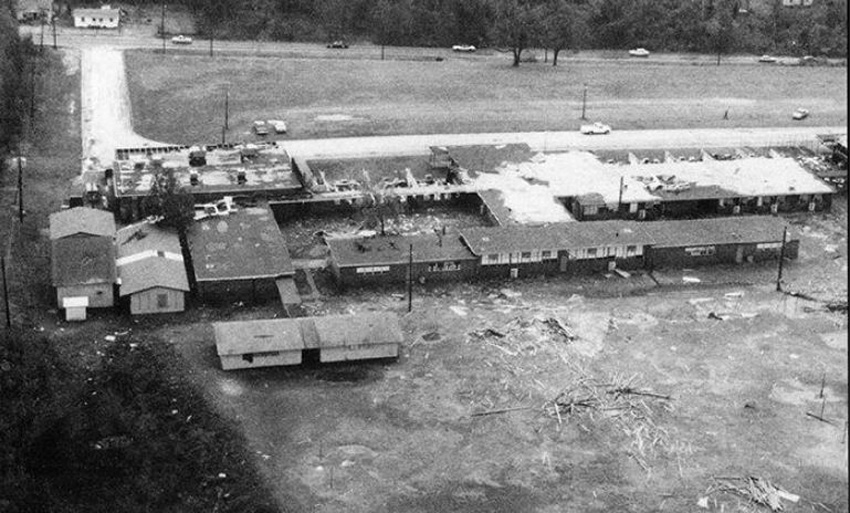
I arrived in Palestine midmorning on Friday, July 29, 2022, and the early steps in the investigation that Davies and I took were inauspicious. Davies’ preliminary research indicated that the Robinson residence was directly behind the A.M. Story Intermediate School but said the street they lived on was no longer there. My initial research focused on the street itself, and I said it was still there. So, off we went in search of 819 Variah. It was still there and so was the original Robinson residence — we confirmed it with images from old newspaper clippings — but the A.M. Story Junior High was gone, having become a large, overgrown vacant lot. I thought it was strange. Generally speaking, school districts repurpose school buildings instead of raze them, especially if they have historical significance.
Alonzo Marion Story came to Texas from Louisiana at the age of 21 and taught math in a little town called Midway before moving to Palestine in 1912. He taught math at the community’s Black high school, Lincoln, for five years and then took a job as the superintendent of the state’s Deaf, Dumb, and Blind Institute for Colored Youth. In 1924, he returned to Lincoln High School and served as the principal and a math teacher until his retirement in 1949. In 1953, the Palestine Independent School District opened the Alonzo Marion Story High School for Blacks, and, after desegregation, the facility became a junior high — which it was at the time of Robinson’s death — and then an elementary school. But as Davies quickly uncovered, the original A.M. Story building was demolished by a tornado on Nov. 15, 1987. It was rebuilt as an intermediate school at a different location in 1990. The Category 3 cataclysm traveled 200 miles on that November day, leaving several dead and millions of dollars of destruction in its wake, but it had passed right in front Frank and Dorothy’s old house without leaving so much as a scratch.
The most recent owners of the Robinsons’ former residence were out when we came by, so we examined the house and the adjacent two-car garage from the street and then drove around Haven Acres. The name of the main access street running in front of Haven Acres had been changed. It was now known as Martin Luther King Jr. Blvd., and Robinson Avenue intersected it at the 1700 block. This was encouraging and grist for a discussion of bizarre serendipity versus simple happenstance. A questionable, controversial death. A tornadic rampage that destroyed the historic school. And then the community’s MLK Boulevard placed and dedicated right down the hill from the scene of the possible crime and a subsequent natural disaster. It figuratively — if not literally — reeked of a guilty community. Neither Davies nor I are superstitious, but it seemed almost silly to assume it was a coincidence.
We made our way to the Anderson County Courthouse and spent most of the rest of the day shuttling back and forth between the bowels of the courthouse and Palestine City Hall. The staff members were great, but we got nowhere. No folders, no files, and no relevant paperwork. We spent hours in the courthouse basement thumbing through multiple tomes of legal documents but found nothing pertinent. Frustrated, we pressed the assistants in the County Clerk’s office, and they referred us to the county clerk himself, Mark Staples. We’d contacted Staples beforehand, and he, in fact, was the one who sent us to the basement file room. Coincidence or no, he was out the day we told him we’d be there. A couple of city hall staff members subsequently referred us to the office of James Todd, Justice of the Peace, Precinct 3. Todd, 68, had been a JP in Anderson County since 1985 and, before that, the chief of police in Elkhart. They thought he might know something or be able to help us.
Todd’s courthouse office was lined with baseball bats and sports memorabilia. He was personable, knowledgeable, and forthcoming. Well aware of the controversial investigation into Robinson’s death, Todd was unequivocal.
“It stinks to high heaven,” he said of the suicide ruling.
Davies and I questioned him about the reported four shots, noting the 12-gauge shotgun’s two-shell capacity, and asked whether it was reasonably feasible that Robinson could have fired the double barrel, break action shotgun four times, cracking it open to remove spent shells and reload, without getting gunpowder residue on his person. Todd succinctly confirmed what other law enforcement officers I had spoken with had already told me. It was practically impossible.
Listening in, Todd’s secretary said we should go talk to County Judge Jeff Doran. Doran, 71, was also personable and amicable, and he agreed with Todd. Though he wasn’t in the area at the time, he commented that the results of the virtually unprecedented inquest into the cause of Robinson’s death weren’t universally well-received in the community and conceded that many Anderson County citizens, Black and white, felt and still feel that the local justice system got it wrong. Then, as the discussion proceeded, Davies and I asked him about the imposing Reagan Park statue of John Reagan, the former Postmaster of the Confederacy and the first Railroad Commissioner of Texas. Following his release from prison after the Civil War, Reagan returned to Palestine and quickly became unpopular. He told his fellow former Confederates to go along with the occupying Union troops. His former compatriots mistakenly viewed him as a traitor, but Reagan was playing the long game. He knew the sooner the citizens of Palestine complied, the sooner the Union troops would leave and Palestine could get back to going about their business — especially where the Black population was concerned. Reagan is still practically omnipresent in the community, but there is nary a hint of progressive folks like Frank J. Robinson, who was certainly one of the state’s most important Black civil rights leaders. Palestine hardly claimed him.
On that point, Doran was starkly realistic. “You have to understand. Before the Civil War, Palestine was the fourth-largest city in the state.”
He noted that it had even donated some of its early, horse-drawn trolleys to its “little sister” city, Dallas, and that the most valuable asset Palestine and Anderson County possessed in those days was its slave population — their slaves were worth more than anything else in the economy. And after the Civil War, the most valuable asset the community had was eradicated. Doran didn’t shill for the Confederacy, but he did say Reagan brought the railroad to Palestine after its economy had been flattened and ensured the city’s prosperity for the next 150 years.
Davies and I then tracked down Ben Campbell, 81, a local historian and the recent author of Two Railroads Two Towns. Campbell confirmed Doran’s comments about John Reagan and the railroad, but he also echoed Todd’s and Doran’s general sentiments about Frank J. Robinson’s death.
“It doesn’t pass the smell test,” he said. “It wasn’t a suicide.”
When Davies and I solicited his opinion on why Robinson’s accomplishments, legacy, and horrific end were so little-known, he was frank.
“The Black community knows about it,” he said but noted that hardly anyone outside of that demographic or even Frank’s generation reflects on the incident. “It was over and done. People don’t talk about it.”
It was a contemplative evening for me. Outside of a handwritten, unilluminating paragraph or two in a ledger provided to us by Todd, we found no other investigation documents or evidence. More questions than answers.
As previously noted, Palestine Police Chief Berry declared Robinson’s death a murder and then reclassified it as a suicide because he somehow straight-facedly reasoned that they could establish no motive for a homicide. And on Oct. 20, he told the Austin American-Statesman that “no one saw anybody near [Robinson’s] house the day he died,” even though testimonies to the contrary submitted by five white middle schoolers and one Hispanic child were already part of the investigative record. Berry’s perspective on the case did not jibe with that of Roy Herrington, the longtime Anderson County Sheriff. Now both deceased, Berry’s and Herrington’s disagreement, other inconsistencies, and outside parties comparing Robinson’s convenient demise to the assassinations of Medgar Evers and Martin Luther King Jr., led to a special inquest of the incident.
None of the sitting Justices of the Peace had law degrees, and somehow the county inquest fell to a 30-year-old municipal court judge. Judge Nemer scheduled a formal inquest before a six-person “coroner’s jury” for Nov. 16, 1976, and empaneled the unsequestered jurists the day before, which was 11 years to the day before the 1987 tornado tore through Palestine. Nemer also instructed Chief Berry and others that a “gag rule” would be imposed on every trial participant to prevent them from elaborating on their testimony after the inquest was over.
In the newspapers of the day, it went well for Palestine. The whole city seemed to be on trial, and, in the end, Robinson’s suicide acquitted the white community and absolved the longstanding cultural institutions that whites cherished. Nemer’s inquest was conducted by local attorneys Richard Handorf and Melvin Whitaker, with assistance from Black State Assistant Attorney General Anthony Sadberry. In a 1982 interview with the Fort Worth Star-Telegram, Sadberry indicated that “he was bound by his profession to accept the ruling of the court” unless he could produce “concrete, conflicting evidence,” and he couldn’t. But he wasn’t satisfied. Of his cohorts and the leaders of the community in general, Sadberry remarked that they seemed “very interested in vindicating that town.”
Damning evidence was blatantly ignored, and every narrative that bolstered the “suicide” theory was stressed. The testimony of A.M. Story middle schoolers was discounted, and a local mortician who claimed Robinson’s body was “tampered with” at the scene of the crime was never called to testify. The testimony of Robinson’s wife, Dorothy — a chairwoman of the Texas Advisory Council for Technical Vocational Education and a recent recipient of an achievement award from the National Association of Negro Business and Professional Women Clubs, who was in Minnesota at the time of her husband’s death — was hardly an obstruction for what her attorney, David Richards, later described as a “steamroller” toward a foregone conclusion. In his 2002 book Once Upon a Time in Texas: A Liberal in the Lone Star State, Richards writes, “There was no evidence to support the suicide theory, no notes, no indication of despondency or health problems. Yet the power structure apparently could not live with the murder alternative and were committed to the suicide rationale. The trial was so painful and the atmosphere so tense that much of it is blotted from my mind.”
Sadberry, now deceased, was haunted by the inquest outcome. “I can’t say in my own mind I am satisfied with the outcome of the inquest,” he told the Star-Telegram in 1982. “I don’t feel sure about what took place.”
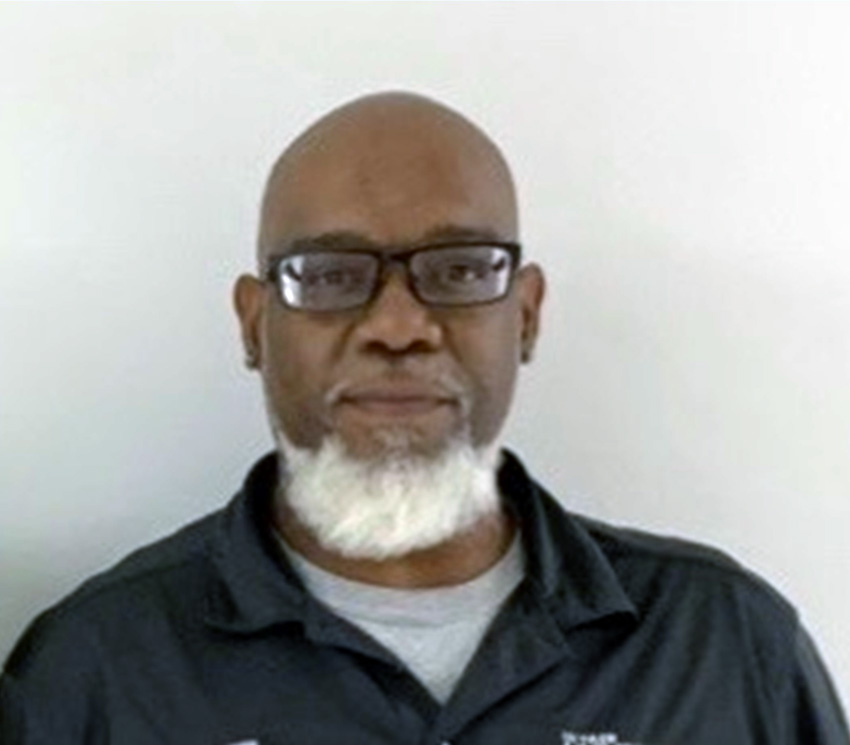
First up for Davies and me on Saturday, July 30, was a local Black historian named Norris White. Soft-spoken, cautious, and thoughtful, White wanted to make sure we knew he hadn’t come to Palestine until the early 1990s and, when he found out about what Frank J. Robinson and others achieved, he was shocked by the absence of any real recognition of those achievements or indignance about Robinson’s death. A 54-year-old academic with some edge, White prefaced his interview with us by laying out several books that he felt explained the history of the Black experience in East Texas, and one of them was my book on the Slocum Massacre. I was flattered but more impressed by some of his recent efforts, which paralleled ours. In February 2018, he published a story about Robinson’s accomplishments in the Palestine Herald-Press, and it cost him a job. Undeterred, he dug further into Robinson’s death and spoke with six local Blacks and one white, ranging in age from their 60s to 80s. And what they agreed to share was communicated only under Norris’ promise of complete confidentiality. After those conversations, including two with Black men who had been middle schoolers at A.M. Story when Robinson was killed (and who corroborated the white middle schoolers’ accounts) but knew better than to come forward, Norris was emphatic.
“The history of East Texas speaks for itself,” he said. “There are no intricate plots. The plot is, ‘Let’s go kill that nigger.’ It may be 160 years since the Civil War ended, and post-civil rights, but the mindset is the same.”
The sense that White got from everyone he interviewed was remarkably similar. “Mr. Robinson was a guy for everybody, and to a lot of people, that’s what’s so hurtful about it.”
White and the folks he interviewed suggest that that’s what is most a shame. For the past 46 years, nobody has really done anything about what many perceive to be Frank’s assassination, and they feel like the community has let Robinson down. But Norris White isn’t naïve. “Lemme tell you, when I first got here, this was the running joke: ‘Black may be beautiful, and tan may be grand, but white is the color of the big boss man.’ In other words, ‘Don’t step out of line, nigger.’ And that’s the sentiment. That’s East Texas. That’s the East Texas I worked under 30 years ago, and that’s the East Texas I live in today.”
Norris White’s comments and the strict confidence he had to offer to obtain his information brought another confidential informant with whom Davies and I had both spoken on separate occasions to mind. The source would say a lot but nothing on record. They had been involved in the local justice system and Anderson County historical circles. They had actually questioned a member of the local judiciary who had been an attorney involved in the Robinson inquest about the unconvincing outcome, and that individual, who was then a sitting judge, cautioned the source in no uncertain terms to leave it alone. He even threatened to charge the source with contempt of court.
Davies and I finished the day trying to locate other interviewees but without much luck. We wanted to speak with Rodney A. Howard, the surviving member of the trio who had challenged and defeated the gerrymandering regime of Anderson County and Palestine on two separate occasions, but he was busy and hard to pin down. I thought, like Norris White’s anonymous sources, and ours, Howard was reticent to speak with us. And I understood why.
We located a 73-year-old Black man that Frank J. Robinson had mentored and who would speak on the record instead. His name is James Robert Smith. The Palestine NAACP secretary at the time of Robinson’s death, Smith rejects the inquest’s determination. “I believe it was a setup and related to an undercurrent of old money. Frank was causing a rift that these people didn’t want.”
Smith believes Frank was killed and his death was made to look like a suicide to discredit him. “Suicide is like voodoo taboo [for Black people], so we don’t do that.”
Later, collating, considering, and weighing the interviews and information we’d collected so far led to another heady night. Over the last decade, I’d spent a lot of time researching and writing about some incredibly dark history in East Texas, and Robinson and his cohorts appeared to have been proverbial beacons of light. And now, 46 years after his sketchy death, I’d met nothing but Palestine citizens — Black and white — who didn’t believe Robinson had committed suicide.
It was unfamiliar, heartening territory for me.
Davies and I spoke with Nemer the following Sunday morning. As late as 2017, he had served again as a municipal court judge in Palestine, and he had actually just campaigned unsuccessfully to become the town’s next mayor.
Friendly and well-spoken, Nemer was possessed of an uncanny recollection of the inquest proceedings. “I knew one day that exactly what we’re doing would come to pass.”
He knew someone would eventually show up at his door asking questions about Robinson’s death. And he admitted that county officials needed someone to handle the inquest and that the 30-year-old “was the easiest mark available.”
But he insisted the inquest went where the evidence led it and stood by the inquest’s declaration of suicide. Nemer also claimed he “knew Frank as well as anybody” and that the political establishment in Anderson County was “not the least bit afraid of Mr. Frank. Period.”
Davies wasn’t having it. We both knew Robinson had been working with Ragsdale on something bigger and with broader implications.
“Robinson and Ragsdale were getting ready to expand on their successes,” Davies said, “where they would take what Frank had done here and move it to 11 different counties across East Texas … and so, though he presented himself as a nonthreatening figure, he was actually doing incredible things through the courts and bringing about the empowerment of African-American communities throughout East Texas.”
“I certainly would agree with that,” Nemer replied. “That’s the truth.”
“And you don’t think some people didn’t like that?” Davies said.
“I can’t speak for them,” Nemer responded, like an implacable totem of the old guard.
“Well,” Davies continued, “how do you think Frank should be remembered?”
“First, I think Frank J. Robinson should be remembered as a good person,” Nemer said. “Second, I think he should be remembered as a community activist who led the way to doing a lot of good and, ultimately, brought the Black and white communities together. It takes leaders to accomplish things, and he certainly, absolutely, positively was a leader who did his darn level best to accomplish that. He felt like it was his mission, and he did it to the best of his ability.”
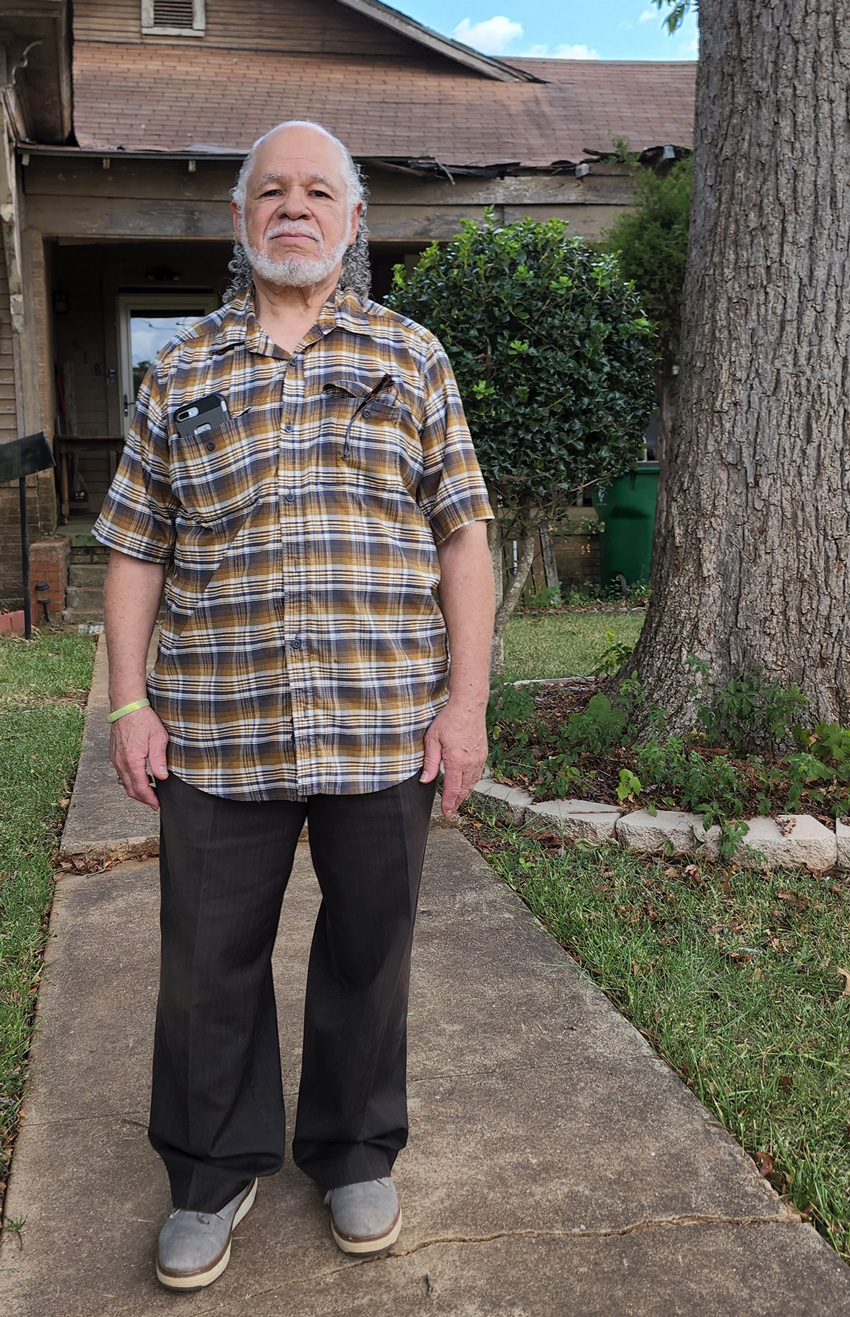
When Davies and I finally sat down with Rodney Howard and told him Nemer had a high opinion of Robinson but still stood by the inquest verdict, Howard spoke very plainly. “He would. Quite a few of them, that’s the spin they wanted to put on it.”
Howard, 80, had worked with his elders Robinson and Timothy Smith in the early- to mid-1970s as an energetic protégé, young but equal and willing to put in the work and stick with it. A civil rights champion in his own right, he didn’t waste time with platitudes. When we told him Nemer dismissed the notion that the local powers that be ever sweated Robinson and, by extension, the work of the trio, he almost grinned. “Well, I think Frank was a big threat because they didn’t wanna see the county change. We were working on a level of political power that they didn’t want us to have.”
In a recent phone call with Daves, the trio’s attorney in their final case against the Palestine City Council, the retired lawyer agreed. Robinson “was a threat in the sense that he was taking on the status quo, and he was trying to drag the community into the modern age. There was a long, long history of white supremacy there, and the atmosphere was intimidating. I think Frank was a threat to the power structure there because he was trying to undo the last 100 years of history in the region.”
Howard mourns his old friend Frank and doesn’t believe the “official” version of Robinson’s demise. “What reason did Frank have to kill himself? He totally caught his wife off guard. He caught the Black community off guard. He caught all the people who worked with him off guard. He and Dorothy were not struggling. They were living decent. I didn’t see anything that would indicate that he would go off his rocker and do something like that. He had too much to live for and be proud of.”
Howard and Timothy Smith had also received death threats back then, and Howard went a stretch or two sleeping on the floor on the side of his bed farthest from a window, with any weapons he had at his side.
“I think he was killed, myself,” Howard said. “Those of us who were close to him and worked with him … we knew he was too much of a fighter to do something like that.”
And yet.
Frank J. Robinson is gone, and his legend doesn’t really live on. And the past several incarnations of the Texas legislature verge on violating Title I of the 1968 Civil Rights Act every other session, making a mockery of everything Robinson stood for, fought for, and probably died for — and hardly anyone pays his memory much less his legacy any mind or heed.
Shouldn’t we make sure FJR is not forgotten? Isn’t the truth of the matter obvious, and don’t we owe it to folks like Robinson, Rodney Howard, and Timothy Smith to do our part?
Perhaps the citizens of Anderson County who want the statue of John Reagan to remain in Reagan Park should consider erecting a new statue of Frank J. Robinson, just as impressive, to face him. Perhaps the citizens of Texas should interject the upcoming election rhetoric with the spirit of Rodney Howard, Timothy Smith, and FJR.
Or what Frank J. Robinson died for was probably all for naught.



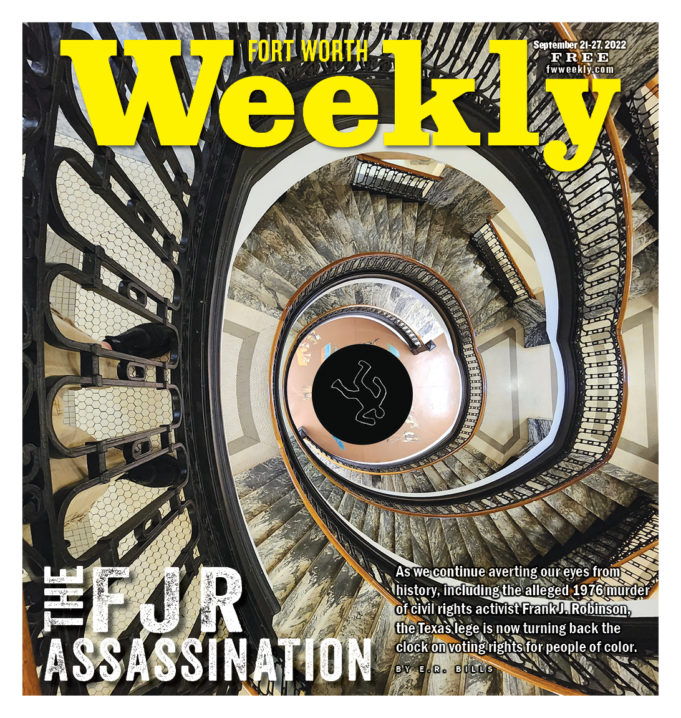

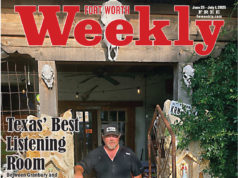







This is an awesome and well-written piece.
As I am considering an African American museum solely focusing on the life and resiliency of African Americans East Texans, Mr. Robinson was suggested as someone I should research for his contributions to Palestine, Anderson County, education, civil rights, as well as, his “questionable death.”
Thank you for this amazing article. It clearly outlines some of the research I was missing.
I’m sure there are atrocities against white folks E.R. do you ever look into them? Or do you just enjoy stoking the flames of hatred perpetually?
Brilliantly Written article Capturing one of many stories of East Texas and the South. African Americans all over East Texas have very similar stories they can attest to that detail the crimes committed against their family members. Crimes of lynching and confinement in jail, coercion, intimidation and beatings suffered by the establishment then and even into the 21st century. It’s terribly disheartening to know that Mr. Frank Robinson was likely murdered. And that nobody has actually been held accountable. As with evidence and testimony revealed that he could not possibly have committed suicide as was the findings and records indicated herein your diligent research. I am glad that one of your interviews in Palestine, in fact revealed to you the taboo nature of suicide in the African American culture. It is so rare in black culture. It is highly unlikely that Mr. Robinson, an African American man, educated, comfortable, making a name for himself and leaving a distinguished legacy for his children, and in his golden years, and married to his college sweetheart would have ever considered suicide. Nobody in their right and/or fair mind would actually believe that. More information will be revealed one day I am sure, like all things that are done in the dark. God has a wonderful way of taking care of all things Evil. Thanks for Sharing.